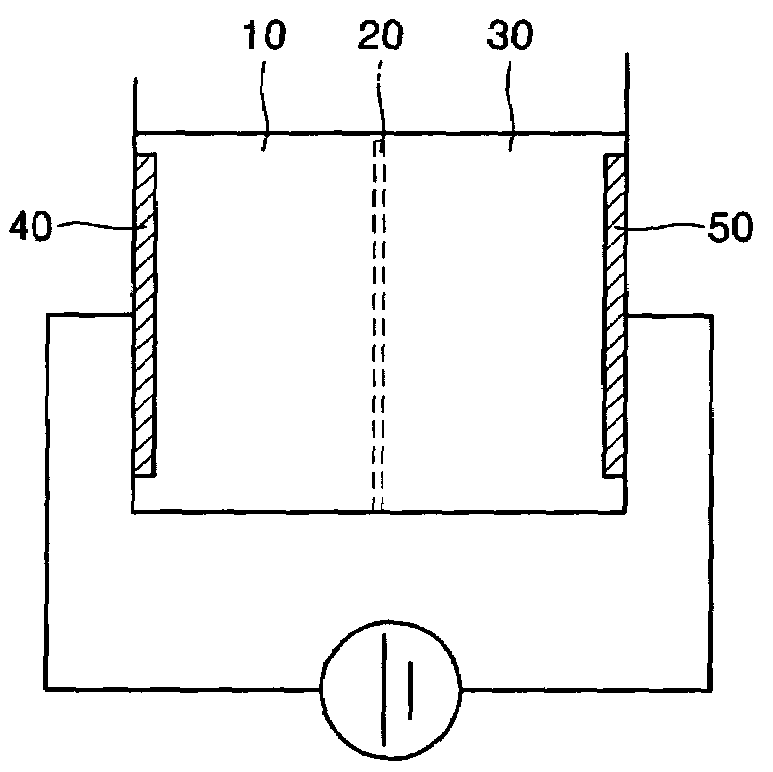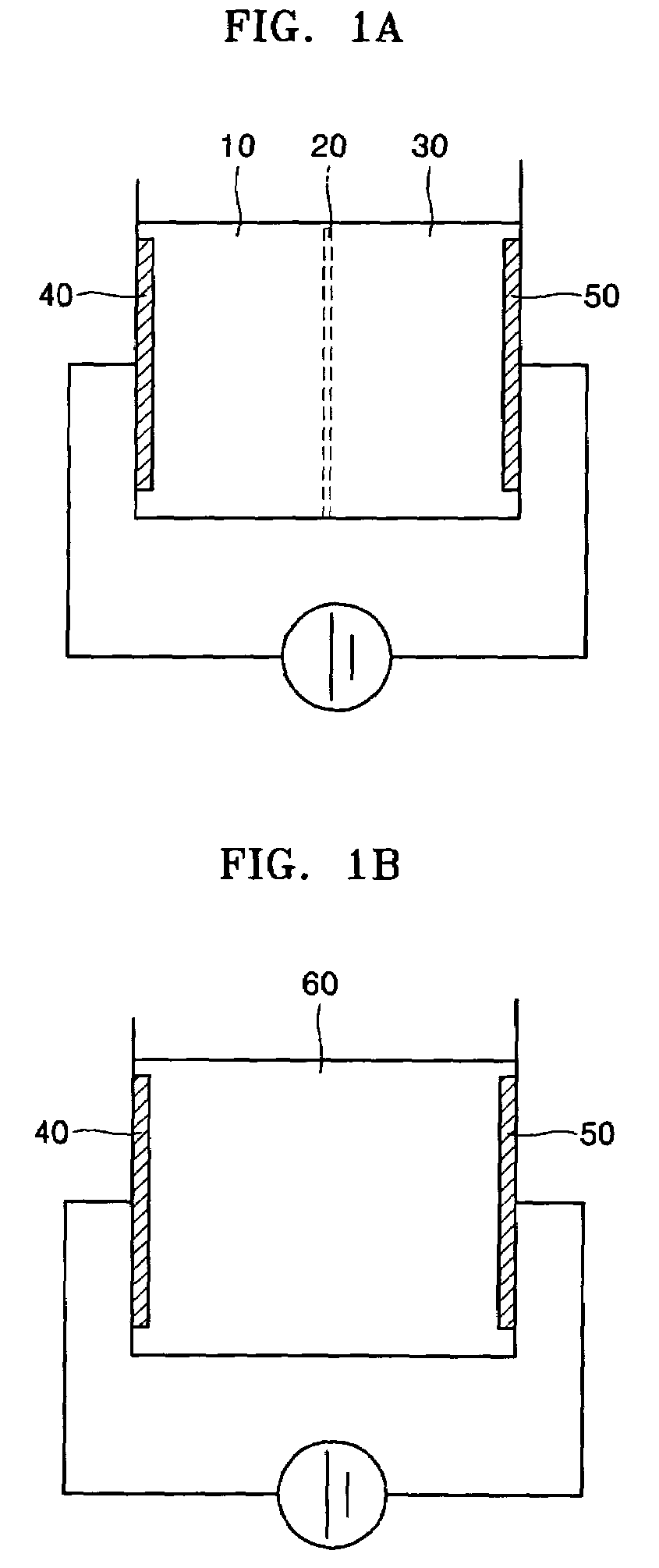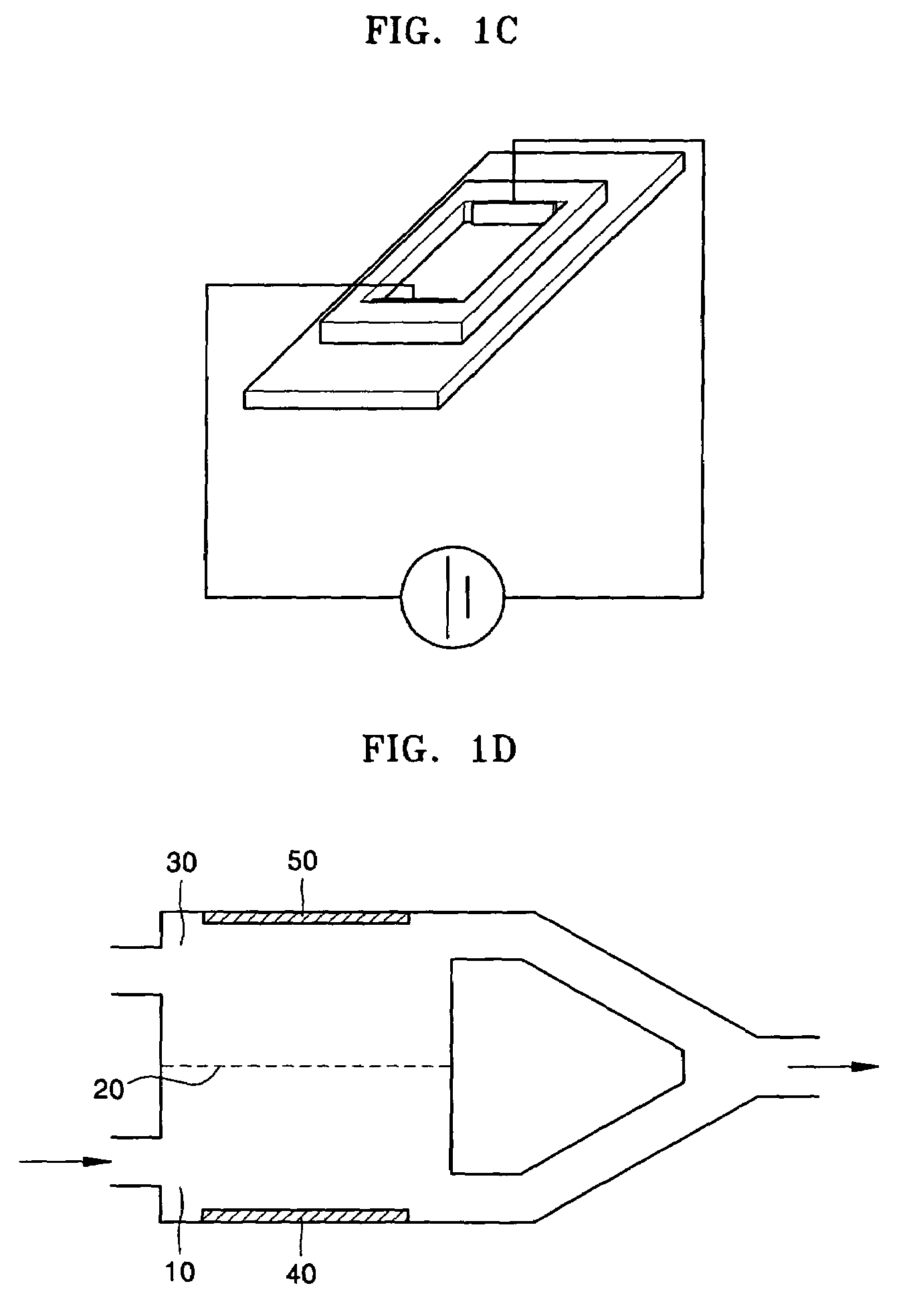Microfluidic device comprising electrolysis device for cell lysis and method for electrochemically lysing cells using the same
a microfluidic device and cell lysis technology, which is applied in the direction of diaphragm, sludge treatment, biomass after-treatment, etc., can solve the problems of inability to use cell lysis methods, conventional cell or virus lysis methods such as alkali methods, and many disadvantages to be used
- Summary
- Abstract
- Description
- Claims
- Application Information
AI Technical Summary
Problems solved by technology
Method used
Image
Examples
example 1
Cell Lysis Through Electrolyzed Solutions of a Cathode Chamber and an Anode Chamber
[0062]In the present Example, cell lysis was caused using a cathode chamber solution and an anode chamber solution obtained after performing electrolysis using an electrolysis device having a cathode chamber, an anode chamber, and a separator installed between the cathode chamber and the anode chamber, and the results were observed.
[0063]The electrolysis device used in the present Example is illustrated in FIG. 1A. Referring to FIG. 1A, the electrolysis device includes a cathode chamber, an anode chamber, and a separator installed between the cathode chamber and the anode chamber. A Au electrode and a Pt electrode were included in the cathode chamber and the anode chamber, respectively, and the cathode chamber and the anode chamber were separated by a Nafion™ membrane (Dupont, USA).
[0064](1) Preparation of Electrolyzed Solutions
[0065]Electrolysis was caused by adding 300 mL of 100 mM NaCl aqueous solu...
example 2
Direct Cell Lysis in an Electrolysis Chamber
[0084]In the present Example, cells was injected into a chamber for electrolysis and an electrolyzed solution was in situ produced, followed by determining cell lysis efficiency.
[0085](1) Device for Electrolysis
[0086]Electrolysis devices illustrated in FIGS. 1A, 1B and 1C were used. The electrolysis device of FIG. 1A is as described in Example 1. To generate hydroxide ions for cell lysis, 12 mL of 10 mM or 100 mM NaCl solution including E. coli was electrolyzed with a DC voltage of 5 V at room temperature for 1 or 3 min.
[0087]The electrolysis device of FIG. 1B is the same as the electrolysis device of FIG. 1A, except that a separator separating an anode chamber and a cathode chamber was not included. The distance between electrodes was 2 cm. The electrolysis device of FIG. 1C was the same as the electrolysis device of FIG. 1B, except that it was placed on a slide glass (Corning, USA) so that observation by a digital camera fixed to a micro...
example 3
Neutralization of Cell Lysate Obtained by Electrolysis
[0097]In the present Example, an electrolysis device having an anode chamber, a cathode chamber and a separator installed between the anode chamber and the cathode chamber as illustrated in FIG. 1A was used and various solutions were electrolyzed in the anode chamber and the cathode chamber, and then the variation in pH of the obtained solutions was observed.
[0098]FIG. 10 illustrates the results of observing the variation in pH with time when adding 10 mL of 100 mM NaCl aqueous solution (initial pH=6.0) to each of the anode chamber and the cathode chamber and applying a DC voltage of 5 V. After 60 sec, the pH of a 1:1 mixture of the anode chamber solution and the cathode chamber solution was 9.49. Thus, it can be seen that when the anode chamber solution and the cathode chamber solution were mixed in a ratio of 1:1, the mixture was not neutralized to initial pH but became alkaline.
[0099]FIG. 11 illustrates the results of observin...
PUM
| Property | Measurement | Unit |
|---|---|---|
| current | aaaaa | aaaaa |
| DC voltage | aaaaa | aaaaa |
| DC voltage | aaaaa | aaaaa |
Abstract
Description
Claims
Application Information
 Login to View More
Login to View More - R&D
- Intellectual Property
- Life Sciences
- Materials
- Tech Scout
- Unparalleled Data Quality
- Higher Quality Content
- 60% Fewer Hallucinations
Browse by: Latest US Patents, China's latest patents, Technical Efficacy Thesaurus, Application Domain, Technology Topic, Popular Technical Reports.
© 2025 PatSnap. All rights reserved.Legal|Privacy policy|Modern Slavery Act Transparency Statement|Sitemap|About US| Contact US: help@patsnap.com



